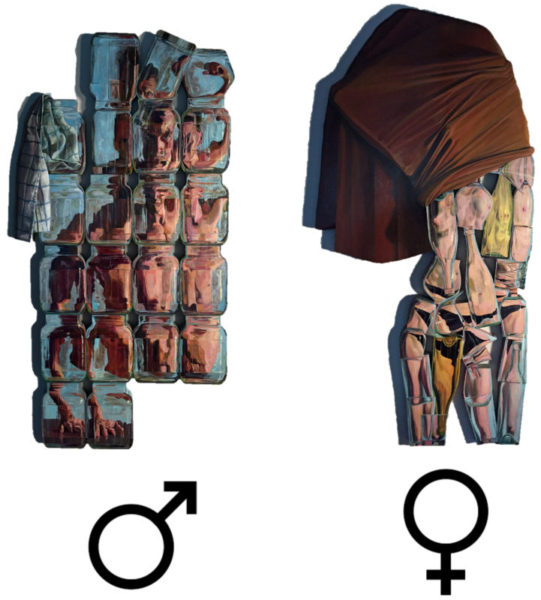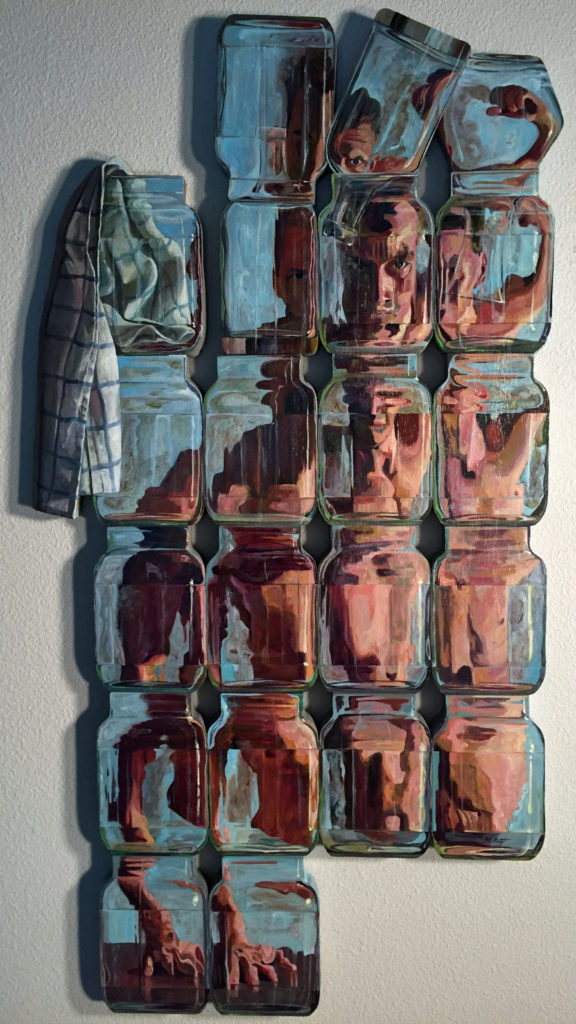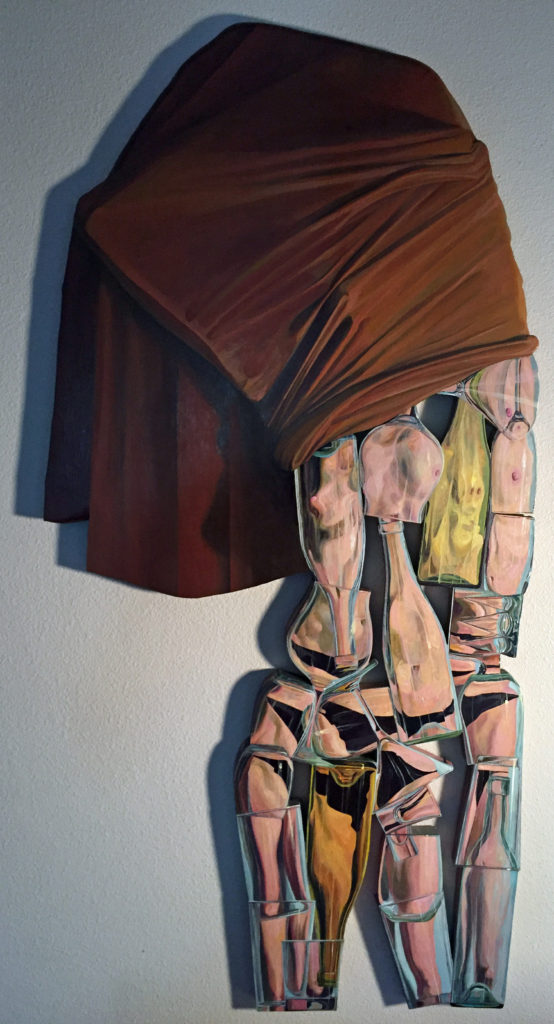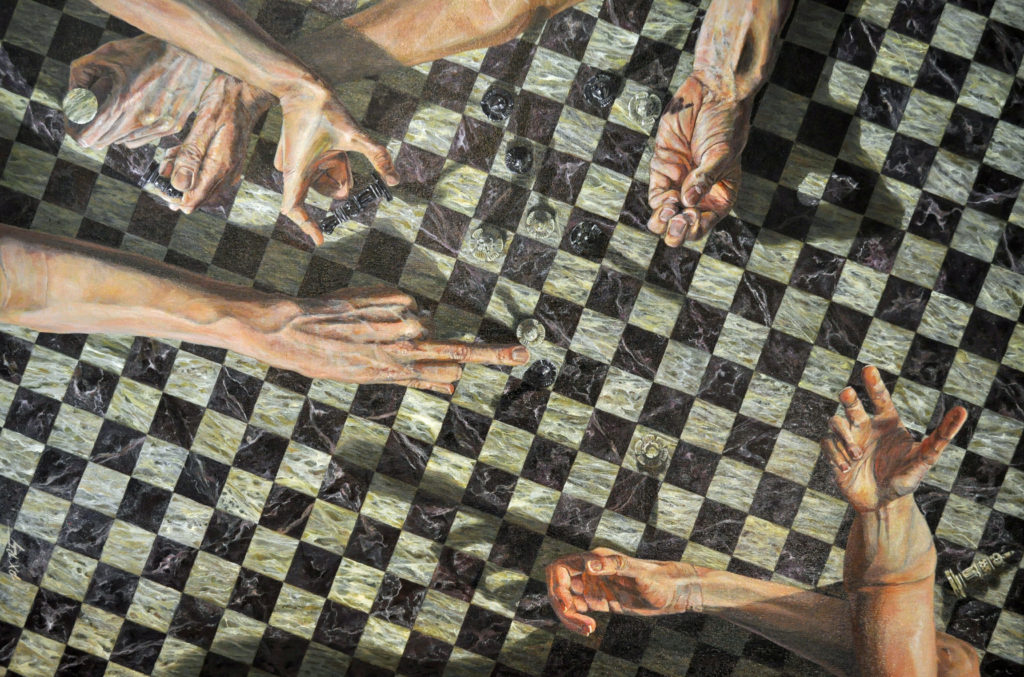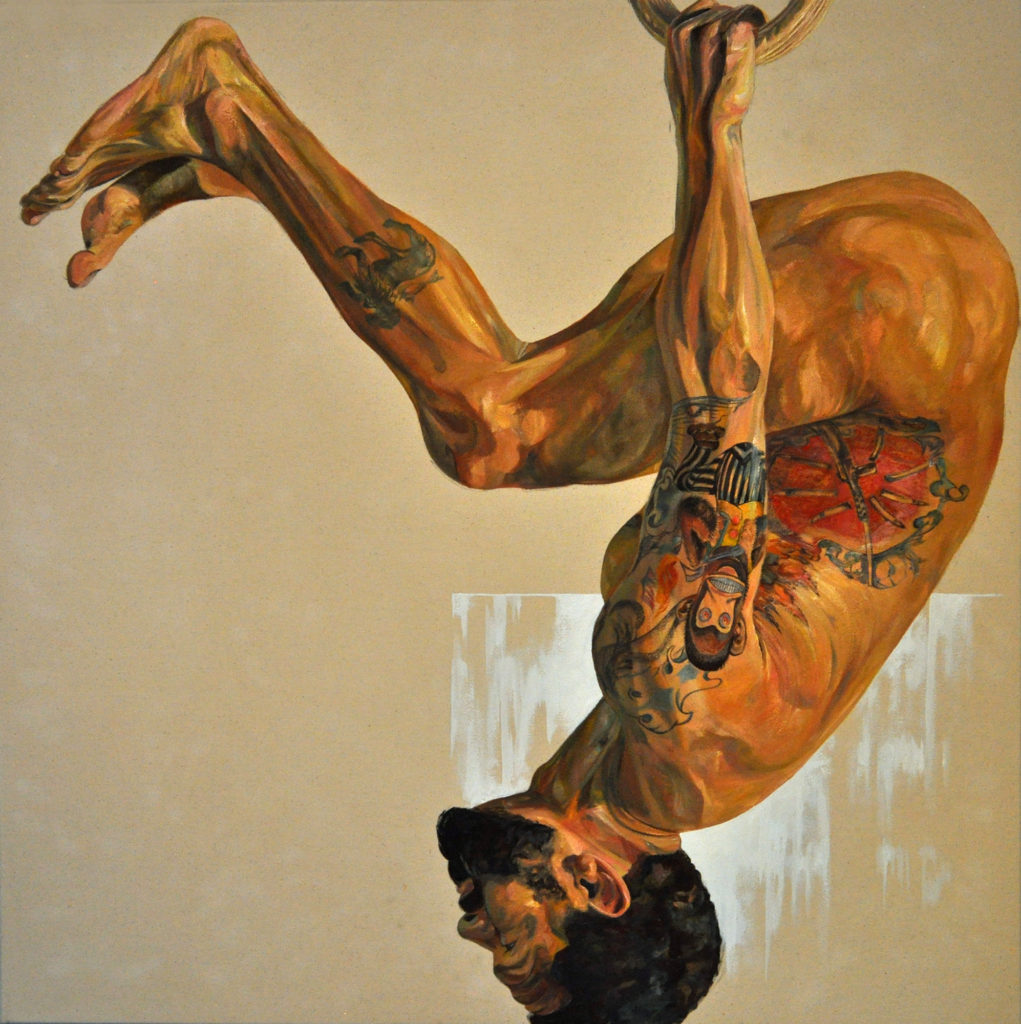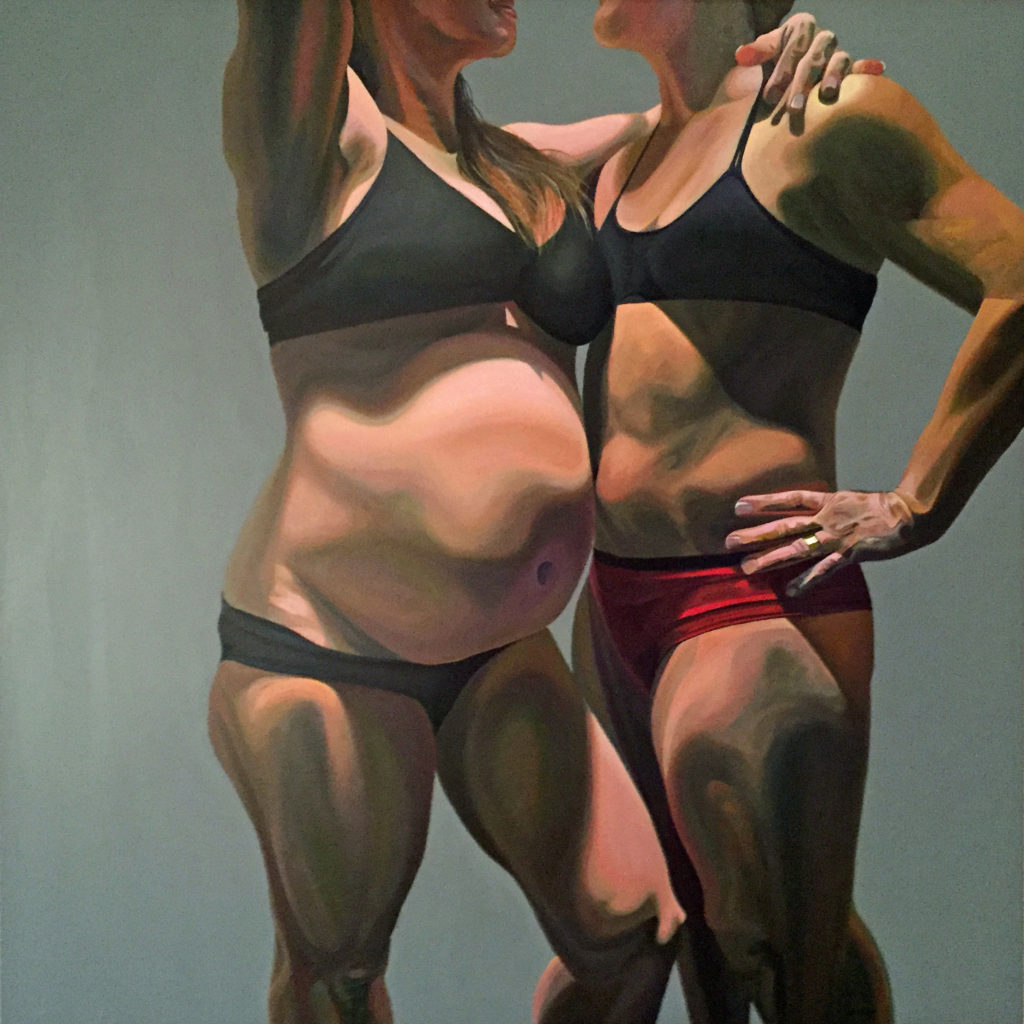Be a Subject in a Neuroscience Study at the Opening Reception
This one-of-a-kind installation reveals paintings designed both as a coherent body of artwork and as scientific stimuli. When you enter, you become part of an experiment.
Opening
Saturday, October 27, 2018
6-9pm
INTO A STUDY is both an art installation and a carefully planned neuroscience study. It began in early 2017 when painter Paul Rutz called neuroscientist Amanda Hampton Wray with a question about how to study the ways people view new paintings. After more than a year spent debating, compromising, fundraising and building a stellar team, that question has blossomed into an immersive exhibit using state-of-the-art research technology to transform the gallery experience.
At the opening—one night only—visitors to Ford Gallery will become subjects in a special data collection event. Many will be fitted with biometric equipment, and all will be shown a series of precisely crafted paintings designed both as a coherent body of art and as stimuli for a neuroscience study.
This is not art inspired by science or vice versa. The exhibit practices both art and science together, which is no small feat! Merging the two cultures has been a difficult yet rewarding process, a dialogue full of give and take—and learning—on both sides. This is a growing niche for art, not only as a site for the artist’s self expression, but, importantly, as a guide for how to engage with the world differently.
Immediately after participating in the study, viewers can enjoy a Q and A with the collaborators and see behind-the-scenes video of how it all came together. Next year the exhibit will be tweaked before it travels to Purdue University and beyond.
A Note on the Subject Matter by Paul X. Rutz
Our symbols for “female” and “male” come from the ancient Romans, but they don’t reference the level-headed Minerva and Apollo, the gods of wisdom, art and self control. Instead they refer to Venus and Mars, the gods of sex and war. The “female” symbol depicts the handheld mirror of Venus, while the “male” circle with arrow represents the shield and spear of the war god.
Looking at those symbols on bathroom doors got me curious about our culture’s parallels to Rome beyond the political and military similarities. A quick online search shows that ancient Rome celebrated some surprisingly complicated and flexible images of femininity and masculinity, much like we do today. It turns out that Venus, the goddess of erotic desire, and Mars, the rampaging, pillaging war god, were just two of many forms of these gods. Romans kept making up new versions of them over the centuries, establishing new names, rituals and temples. Soldiers of the Roman Empire sacrificed to Mars Gradivus—the marching god, god of good combat—but when Rome was not yet so big and powerful many people worshipped the agricultural god Mars Silvanus. He gave farmers good harvests and made them into good fathers. As guarantor of treaties, Mars Quirinus precariously held on to peace. Venus Obsequens—Indulgent Venus—was the ancient Romans’ image of the perfect wife, while Venus Genetrix, the pure feminine parent, brought out the best qualities of motherhood in her people. (Julius Caesar’s clan, the Julii, claimed this version of the goddess as their ancestor.) Some ancient writers say the city also worshipped Venus Calva—Bald Venus—for motivating Roman women to sacrifice their hair for the common good, such as during a siege of the city when women cut off their hair and wove the strands into bowstrings to fight off the invaders.
The ancient Romans believed the gods drove people’s behavior. Personified in statues, paintings, prayer and ritual, Venus Obsequens was healthy erotic desire. When you felt it, you knew she had found her way inside you. The paintings in this exhibit show these versions of Venus and Mars as I found them living in us today.
Follow our Journey
On the web: paulrutz.com
Instagram: @paulxrutz @fordgallerypdx #intoastudy
Bios
Paul X. Rutz paints pictures in oil on canvas and carved panel. A former Naval Officer and ballet dancer, he holds a Ph.D. in visual culture. His exhibitions include solo shows at the Oregon Military Museum and several academic galleries, as well as group shows at Mark Woolley Gallery and the Smithsonian Institution. A former reporter for the Pentagon’s press service, he has contributed to HuffPost, Modern Fiction Studies, The Smart Set, and Cincinnati Review, among others, and he writes features for Military History and Vietnam magazines.
Amanda Hampton Wray, Ph.D., CCC-SLP, is an Assistant Professor of Communicative Sciences & Disorders and director of the Brain Systems for Language Lab at Michigan State University. Her research program examines relationships between cognitive and linguistic proficiencies and life experiences. Her work employs measures of brain functions mediating language and attention processes in order to understand the development of these skills in populations with typical and disordered developmental trajectories, including children who stutter and those with SLI.
Financial Support
Music
Courtesy of The Go! Team
Special Thanks
Ford Gallery, Portland, OR
Jason Babcock of Positive Science, LLC
Laura Annalora and Queens’ Suite
Brian J. Clark Productions
Dar Meshi, Ph.D., and Courtney Venker, Ph.D., of Michigan State University
Megan Heiy, Esq.


